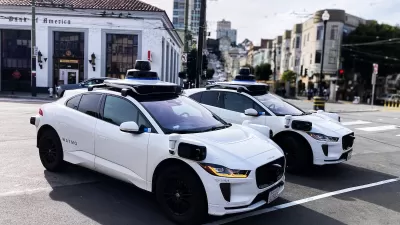Last week, I was busy trying to turn my paper on sprawl in Canada (available at http://works.bepress.com/lewyn/65/) into a speech. In my paper, I define sprawl in two ways: where we grow (measured by growth or decline of central cities, controlling for municipal annexations) and how we grow (measured by modal shares for cars and transit). As I was proofing, I asked myself: why these particular measurements? What presuppositions underlie defining sprawl based on, say, modal share as opposed to the growth of a urban area's land mass?
Last week, I was busy trying to turn my paper on sprawl in Canada (available at http://works.bepress.com/lewyn/65/) into a speech. In my paper, I define sprawl in two ways: where we grow (measured by growth or decline of central cities, controlling for municipal annexations) and how we grow (measured by modal shares for cars and transit). As I was proofing, I asked myself: why these particular measurements? What presuppositions underlie defining sprawl based on, say, modal share as opposed to the growth of a urban area's land mass?
It seems to me that how you define sprawl must be based on what you view as interesting or problematic about sprawl. My concerns about sprawl are based primarily on concerns about freedom and consumer choice. To me, a region where city living is not a reasonable option is a place lacking in adequate choice, so I define a sprawling region as one where the city has weakened over time. A region where not driving is not a reasonable option for most people is similarly lacking in consumer choice, so I focused on automobile dependence and used modal share as my leading criterion.
But someone focused primarily on environmental issues would want to measure sprawl very differently. For example, if your primary interest is in sprawl-related destruction of wildlife habitat or agriculture, you would consider a sprawling region as one with lots of land that is no longer usable by wildlife or agriculture (perhaps measured by the growth of the suburban land mass from X square miles to Y square miles). If your primary interest is air pollution and greenhouse gas emissions you might wish to define a sprawling region as one with a high level of transportation-related emissions per capita (a much trickier enterprise, since these sorts of statistics are not so easy to find). If your primarily concern is social and fiscal inequality between city and suburb, you might define a sprawling region as one where a city is much poorer than its surrounding suburbs, and accordingly focus on measures of per capita and household income for a city and its surrounding suburbs.

Manufactured Crisis: Losing the Nation’s Largest Source of Unsubsidized Affordable Housing
Manufactured housing communities have long been an affordable housing option for millions of people living in the U.S., but that affordability is disappearing rapidly. How did we get here?

Americans May Be Stuck — But Why?
Americans are moving a lot less than they once did, and that is a problem. While Yoni Applebaum, in his highly-publicized article Stuck, gets the reasons badly wrong, it's still important to ask: why are we moving so much less than before?

Research Shows More Roads = More Driving
A national study shows, once again, that increasing road supply induces additional vehicle travel, particularly over the long run.

Which US Rail Agencies Are Buying Zero-Emissions Trains?
U.S. rail agencies are slowly making the shift to zero-emissions trains, which can travel longer distances without refueling and reduce air pollution.

San Diego School District Approves Affordable Housing Plan
The district plans to build workforce housing for 10 percent of its employees in the next decade and explore other ways to contribute to housing development.

Lawsuit Aims to Stop NYC’s ‘City of Yes’ Zoning Reforms
A lawsuit brought by local lawmakers and community groups claims the plan failed to conduct a comprehensive environmental review.
Urban Design for Planners 1: Software Tools
This six-course series explores essential urban design concepts using open source software and equips planners with the tools they need to participate fully in the urban design process.
Planning for Universal Design
Learn the tools for implementing Universal Design in planning regulations.
City of Moreno Valley
Institute for Housing and Urban Development Studies (IHS)
City of Grandview
Harvard GSD Executive Education
NYU Wagner Graduate School of Public Service
City of Cambridge, Maryland
Newport County Development Council: Connect Greater Newport






























